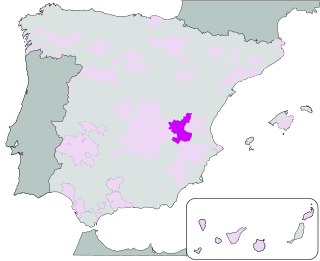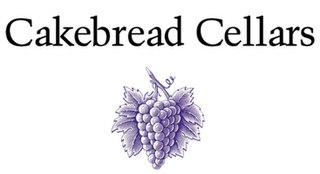
Chile has a long history in the production of wine, with roots dating back to the 16th century when the Spanish conquistadors introduced Vitis vinifera vines to the region. In the mid-19th century, French wine varieties such as Cabernet Sauvignon, Merlot, Carmenère, and Franc were introduced. During the early 1980s, the Chilean wine industry underwent a renaissance with the introduction of stainless steel fermentation tanks and the use of oak barrels for aging. This led to a rapid growth in exports as quality wine production increased. The number of wineries in Chile rose from 12 in 1995 to over 70 in 2005.

New Zealand wine is produced in several of its distinct winegrowing regions. As an island country in the South Pacific Ocean, New Zealand has a largely maritime climate, although its elongated geography produces considerable regional variation from north to south. Like many other New World wines, New Zealand wine is usually produced and labelled as single varietal wines, or if blended, winemakers list the varietal components on the label. New Zealand is best known for its Marlborough Sauvignon Blanc, and more recently its dense, concentrated Pinot Noir from Marlborough, Martinborough and Central Otago.

Brown Brothers Milawa Vineyard is a family-owned wine company based in Milawa, Victoria, Australia. Brown Brothers was founded in 1889 by John Francis Brown and continues to be owned and operated by his descendants on the original property. Brown Brothers makes wine from a wide range of grape varieties and into a range of styles.

The Walla Walla Valley AVA is an American Viticultural Area located within Washington state and extending partly into the northeastern corner of Oregon. The wine region is entirely included within the larger Columbia Valley AVA. In addition to grapes, the area produces sweet onions, wheat and strawberries. After the Yakima Valley AVA, the Walla Walla AVA has the second highest concentration of vineyards and wineries in Washington State. Walla Walla hosts about 140 wineries.

Columbia Winery is a Washington state winery located in Woodinville, Washington. The winery is currently owned by E & J Gallo Winery. The winery was founded in 1962 as Associated Vinters by several former professors at the University of Washington. In 1979, the winery hired David Lake as head winemaker and under his stewardship, Columbia Winery was the first winery in the state of the Washington to produce varietal wines of Cabernet Franc, Pinot gris and Syrah. In 1983, the winery released wines under its current name. In 1988, the winery moved to its current location in Woodinville wine country. Due to failing health, David Lake retired from Columbia in 2006. In 2006, Kerry Norton (formerly of Covey Run Winery was hired as Director of Winemaking. In June 2008, Columbia Winery were sold by Constellation Brands to newly formed Ascentia Wine Estates, which in turn sold Columbia to Gallo in 2012.



The Mendocino County wine is an appellation that designates wine made from grapes grown mostly in Mendocino County, California. The region is part of the larger North Coast AVA and one of California's largest and most climatically diverse wine growing regions. Mendocino County is one of the northernmost commercial wine grape regions in the state with two distinct climate zones separated by the Mendocino Range. Ten American Viticultural Areas have been designated within Mendocino County. Mendocino is one of the leading wine growing regions for organically produced wine grapes. Nearly 25% of the acreage in Mendocino County is grown organically. In 2004, the residents of the county voted to become the first GMO-free county in the United States in an initiative that was supported by many of the county's largest wineries. The county's widespread focus on organic viticulture has inspired journalists to describe it as "California's organic wine Mecca".

California wine production has a rich viticulture history since 1680 when Spanish Jesuit missionaries planted Vitis vinifera vines native to the Mediterranean region in their established missions to produce wine for religious services. In the 1770s, Spanish missionaries continued the practice under the direction of the Father Junípero Serra who planted California's first vineyard at Mission San Juan Capistrano.

Victorian wine is wine made in the Australian state of Victoria. With over 600 wineries, Victoria has more wine producers than any other Australian wine-producing state but ranks third in overall wine production due to the lack of a mass bulk wine-producing area like South Australia's Riverland and New South Wales's Riverina. Viticulture has existed in Victoria since the 19th century and experienced a high point in the 1890s when the region produced more than half of all wine produced in Australia. The phylloxera epidemic that soon followed took a hard toll on the Victoria wine industry which did not fully recover till the 1950s.

British Columbia wine is Canadian wine produced in the province of British Columbia. Wines made from 100% British Columbia grapes can qualify for classification under one of British Columbia's two classification systems, depending on the variety, the winemaking techniques employed, and various other restrictions.

An international variety is a grape variety that is widely planted in most of the major wine producing regions and has widespread appeal and consumer recognition. These are grapes that are highly likely to appear on wine labels as varietal wines and are often considered benchmarks for emerging wine industries. There is some criticism that the popularity of so-called international varieties comes at the price of a region's indigenous varieties. The majority of declared international varieties are French in origin, though in recent years the popularity of Spanish and Italian varietals has seen an increase in worldwide plantings and these may also be considered "international varieties".

The Lake Chelan AVA is an American Viticultural Area (AVA) in Washington State. Located in the north-central part of the state around Lake Chelan, the area is a sub-appellation of the greater Columbia Valley AVA. Of the 24,040 acres within the AVA's boundaries, only 260 acres were planted with wine grapes which was producing wine for fifteen wineries as of 2009. While viticulture has existed in the region since 1891, the area was approved as a federally designated wine region in April 2009 when it became Washington's 11th AVA.

Anakena is a privately owned winery based in the Alto Cachapoal area of the Rapel Valley of Chile. It produces a variety of styles. In September 2015 Anakena was bought by Accolade Wines for $30 million.
Ochagavia Wines is a Chilean winery, located in Macul, Santiago. The winery was founded in 1851 by Don Silvestre Ochagavía Errázuriz, an industrialist of the mining and agriculture. He visited to Europe and studied the latest winemaking. After his study, he went back to Chile, bringing the new style to Chilean wine by the grapes from Bordeaux, France. The red grapes were Cabernet Sauvignon, Merlot, Malbec, Pinot noir etc. and the white grapes were Chardonnay, Sauvignon blanc, Sémillon, Riesling etc. Thus the winery contributed to change Chilean wine history, and the founder is referred to as the father of modern Chilean winemaking.

Red Willow Vineyard is a grape-growing estate located in the far western end of Yakima Valley AVA, within the Yakama Indian Reservation. Beginning with their relationship with Columbia Winery and Master of Wine David Lake, grapes from Red Willow have been used to produce some of the most critically acclaimed Washington wines with the vineyard's name regularly being featured on vineyard designated wines. Paul Gregutt, wine writer for the Seattle Times and Wine Enthusiast, list Red Willow as one of the "top ten" vineyards in the entire state.

Hawk Haven Vineyard & Winery is a winery in Rio Grande section of Lower Township in Cape May County, New Jersey. A family dairy and produce farm since 1940, the vineyard was first planted in 1997, beginning with Cabernet Sauvignon. The winery opened their doors to the public in 2009 with their first vintage in 2007, which consisted of the American Kestrel White, Red Table Wine, Merlot, and Cabernet Sauvignon. Today, Hawk Haven has 16 acres of grapes under cultivation, and produces 5,000 cases of wine per year. The winery is named for the large number of hawks that migrate to the farm every year. They currently have sixteen different varietals and all of the grapes are harvested, pressed, fermented, aged, blended, and bottled on site.

Cakebread Cellars is a Napa Valley winery known for its Chardonnay and Sauvignon Blanc wines, which are internationally distributed. Founded in 1973 by Jack and Dolores Cakebread in Rutherford, California, the winery produces approximately 200,000 cases of wine per year.

Villa Melnik is a family-owned winery located near the village of Harsovo, about 7 km south of Melnik, Bulgaria.

Viña Viu Manent is a Chilean winery, founded in Santiago de Chile by the Catalan immigrant Miguel Viu García, and his sons Agustín and Miguel Viu Manent, in 1935, later established as a winery in 1966, after acquisition of San Carlos de Cunaco hacienda, in the Colchagua valley, O'Higgins Region. The company had 300 hectares of vines cultivated in 2017, between the haciendas of San Carlos, El Olivar and La Capilla, and projected, for that same year, sales of 250,000 cases per year, distributed in 50 countries. Its main grape varieties are Malbec, Syrah, Carmenère, Cabernet Sauvignon and Merlot, as well as Chardonnay, Sauvignon Blanc and Viognier.


















